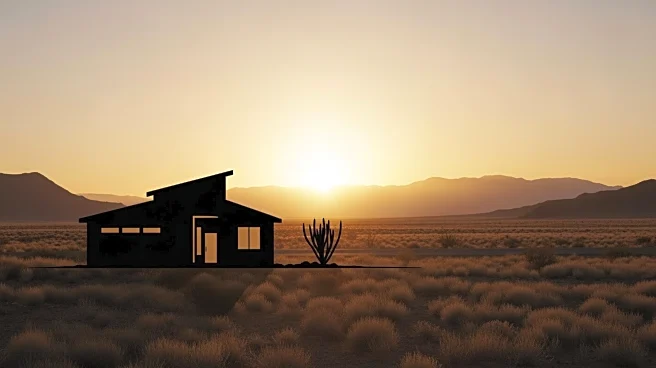What's Happening?
Recent data compiled by Stacker using Realtor.com statistics indicates a significant interest in Sierra Vista, Arizona, from homebuyers in various major U.S. metropolitan areas. The scarcity of homes on the market nationwide, which remains below pre-pandemic
levels, has kept prices elevated despite a slowdown in sales over the past year. This trend has led to increased online house hunting, with 97% of homebuyers utilizing online platforms according to a 2021 National Association of Realtors report. The cross-market demand data from Q3 2025 highlights that Phoenix, Arizona, leads with a 27.5% view share, followed by Tucson, Arizona, at 9.5%. Other notable metros include Los Angeles, California, with a 6.6% view share, and Las Vegas, Nevada, at 5.7%.
Why It's Important?
The interest in Sierra Vista from major metropolitan areas underscores a broader trend of migration and real estate investment in less densely populated regions. This shift could have significant implications for local economies, potentially driving up property values and altering community demographics. For cities like Phoenix and Tucson, which are already experiencing growth, this trend may exacerbate existing housing shortages and affordability issues. Conversely, Sierra Vista could benefit from increased economic activity and diversification as new residents bring varied skills and resources. Real estate professionals and policymakers may need to address infrastructure and service demands to accommodate this influx.
What's Next?
As interest in Sierra Vista continues to grow, local governments and real estate developers may need to consider expanding housing inventory to meet demand. This could involve new construction projects or incentives for homeowners to sell. Additionally, community leaders might focus on enhancing amenities and services to attract and retain new residents. Monitoring migration patterns and adjusting urban planning strategies will be crucial in managing growth sustainably. Stakeholders, including local businesses and educational institutions, may also play a role in integrating newcomers into the community.
Beyond the Headlines
The migration trend towards Sierra Vista reflects broader societal shifts, including remote work flexibility and lifestyle changes post-pandemic. This movement may influence cultural dynamics, as new residents bring diverse backgrounds and expectations. Long-term, Sierra Vista could evolve into a more cosmopolitan area, impacting local traditions and social structures. Ethical considerations around gentrification and equitable access to housing may arise, requiring thoughtful community engagement and policy development.













